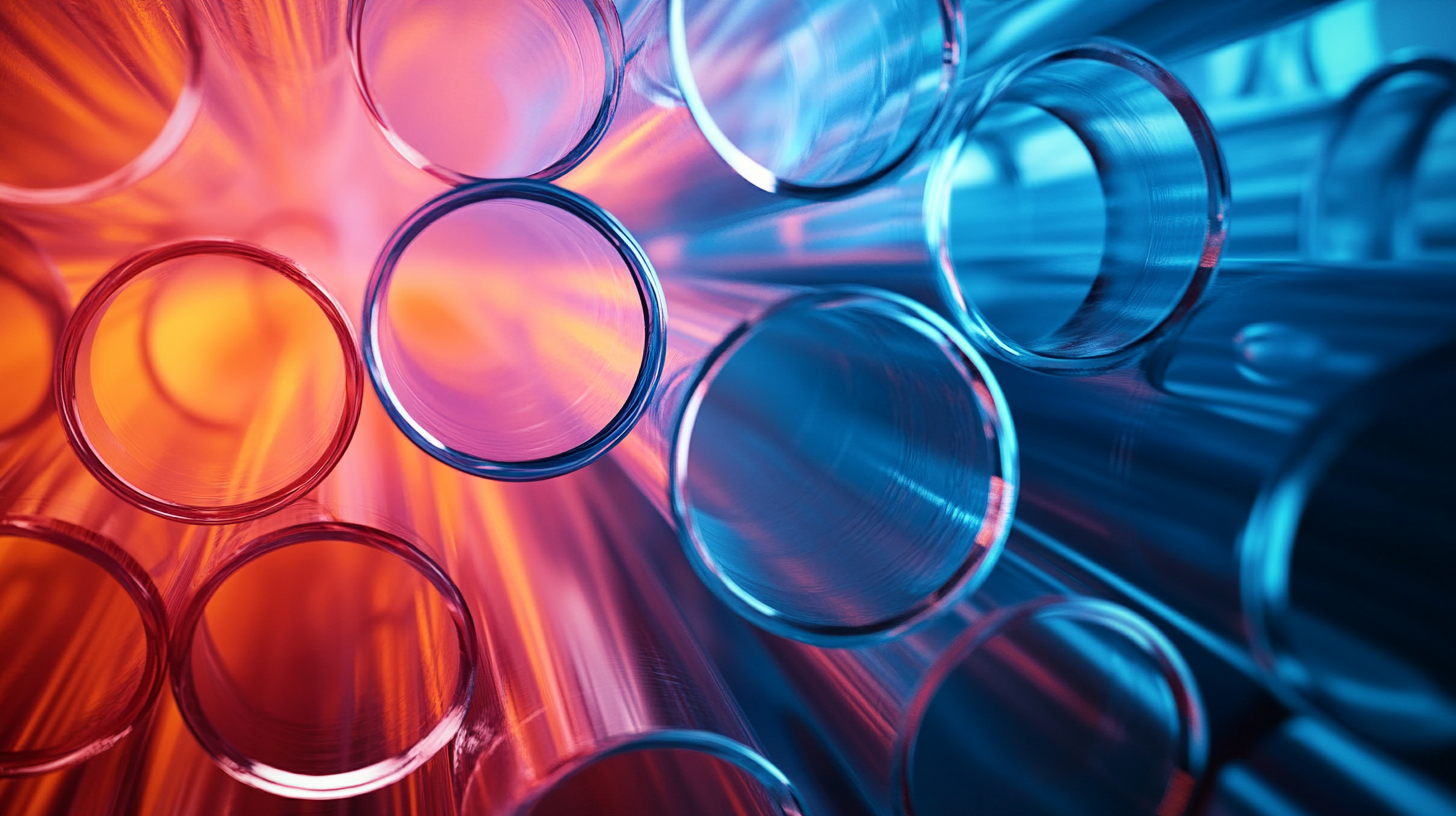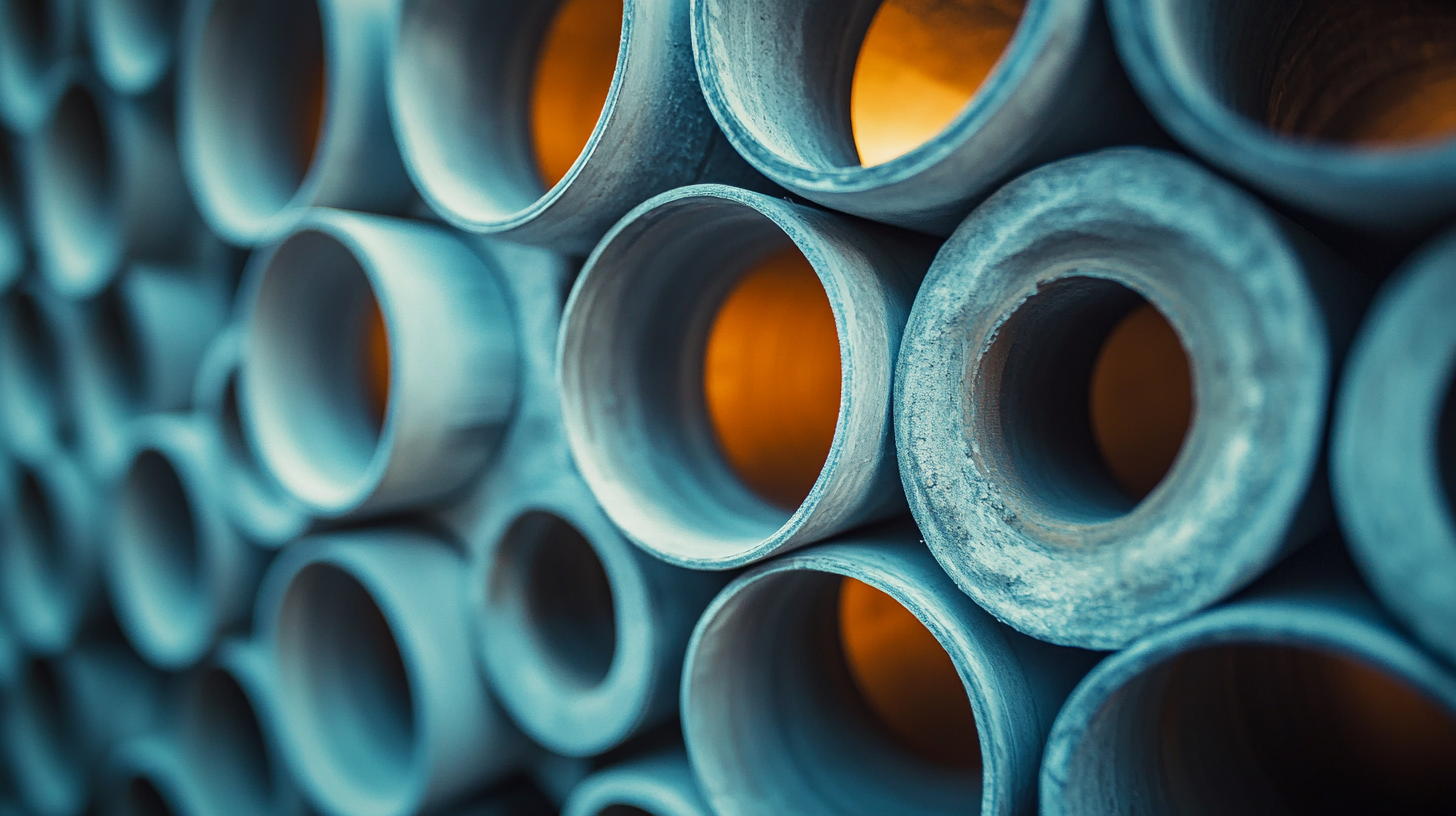
5 Innovative Strategies For Choosing The Best Impact Modifier For PVC Pipes
In the ever-evolving landscape of PVC pipe manufacturing, the selection of the right impact modifier is crucial for ensuring product durability and performance. According to the recent report from MarketsandMarkets, the global impact modifiers market is projected to reach USD 2.9 billion by 2025, reflecting a significant demand for high-quality modifiers that enhance the mechanical properties of PVC. With an emphasis on resilience, flexibility, and overall longevity, manufacturers must navigate various innovative strategies to choose the optimal impact modifier for PVC pipes. Incorporating advanced materials and tailored formulations not only meets the industry's stringent standards but also allows for improved longevity and reduced maintenance costs in applications ranging from construction to plumbing. As we delve into the five innovative strategies for selecting the best impact modifier for PVC pipes, we will explore actionable solutions that align with the latest industry trends and data-driven insights.

Exploring the Role of Impact Modifiers in PVC Pipe Performance
Impact modifiers play a crucial role in enhancing the performance of PVC pipes, which are widely used in construction and plumbing applications. These modifiers improve the material's toughness and flexibility, making it more resistant to brittle fractures caused by sudden impacts or extreme weather conditions. According to a report by the PVC Pipe Association, the addition of impact modifiers can increase the ductility of PVC by over 50%, thereby significantly enhancing its longevity and reliability in various applications.
Moreover, selecting the right impact modifier involves considering factors such as compatibility with PVC formulations, processing techniques, and the specific environmental conditions to which the pipes will be exposed. A study conducted by the American Society for Testing and Materials (ASTM) indicates that variations in elastomeric impact modifiers can lead to a 30% improvement in impact resistance. This highlights the importance of conducting thorough assessments and utilizing innovative strategies when choosing the appropriate modifier to ensure optimal performance in different service environments. By carefully evaluating these considerations, manufacturers can produce PVC pipes that not only meet industry standards but also exceed expectations in terms of durability and efficiency.
Impact Modifier Performance in PVC Pipes
Key Factors to Consider When Selecting Impact Modifiers for PVC
When selecting impact modifiers for PVC (Polyvinyl Chloride) pipes, it's crucial to consider several key factors that can significantly influence the performance and durability of the final product. One of the most important aspects is the compatibility of the modifier with PVC resin. A study published in the *Journal of Polymer Science* indicated that the right impact modifier can enhance the toughness of PVC by up to 30%, improving its resistance to cracking and environmental stress. Additionally, the melt flow characteristics of the impact modifier need to be evaluated to ensure proper processing during pipe manufacturing.
Tip: Always conduct preliminary compatibility tests to ensure that the impact modifier integrates well with the PVC formulation, minimizing the risk of phase separation or undesired mechanical properties.
Another factor to keep in mind is the temperature resistance of the impact modifier. Reports by the Plastics Industry Association highlight that extreme temperature variations can lead to the deterioration of impact modifiers. Therefore, choosing modifiers with a high thermal stability rating is essential for maintaining the integrity of your PVC pipes in challenging conditions.
Tip: Look for impact modifiers that offer a balance between flexibility and heat resistance to extend the lifespan of your PVC pipes in various applications.

Innovative Technologies Transforming Impact Modifier Selection Process
Innovative technologies are reshaping the selection process for impact modifiers in PVC pipe production, enabling enhanced performance and sustainability. Recent reports from industry sources have highlighted that the growing adoption of artificial intelligence (AI) is significantly influencing the way small and medium-sized enterprises (SMEs) approach material selection. A SEM–ANN analysis indicates that AI-driven data analytics can facilitate optimal choice of impact modifiers by analyzing a variety of properties in real-time, ultimately improving durability and flexibility in PVC products. This data-centric approach not only enhances product performance but also aligns with sustainability goals as manufacturers seek eco-friendly modifiers.
Moreover, the Critical Technology Tracker report underscores the importance of long-term investments in technology research, providing insights into 64 critical technologies, including advanced materials and manufacturing processes. The trend indicates that innovative solutions such as eco-friendly impact modifiers are increasingly prioritized, reflecting a broader shift towards sustainable practices within the industry. By integrating innovative technologies like AI and advanced data analytics, manufacturers can ensure more precise selections of impact modifiers, driving efficiency and compliance with environmental standards while creating high-performance PVC pipes.

Comparative Analysis of Traditional vs. Modern Impact Modifiers
When it comes to choosing the right impact modifier for PVC pipes, understanding the comparative advantages of traditional versus modern impact modifiers is crucial. Traditional impact modifiers, such as polybutadiene and acrylic, have been the standard for years, providing acceptable toughness and flexibility. However, recent data shows that modern impact modifiers—particularly those based on thermoplastic elastomers (TPE) and block copolymers—offer enhanced performance. For instance, a 2022 report from the Plastics Industry Association notes that modern modifiers can improve impact resistance by up to 50% while reducing brittleness under low temperatures.
**Tip:** Always consider the environmental conditions the pipes will face. If they are in severe climates or are subject to heavy impacts, opting for modern modifiers over traditional variants can yield better long-term performance.
In addition to improved impact properties, modern impact modifiers can also contribute to better processing characteristics and reduced energy consumption during manufacturing. A comparative analysis indicates that TPE-based modifiers could lower the processing temperatures by around 10% compared to traditional options, leading to potential energy savings of 15-20%.
**Tip:** Evaluate your production process. If energy efficiency is a concern, switching to a modern impact modifier could not only enhance product performance but also contribute to your sustainability goals.
Sustainability Considerations in Choosing Impact Modifiers for PVC Pipes
When selecting impact modifiers for PVC pipes, sustainability is becoming an essential criterion. With the global impact modifier market valued at approximately USD 3.86 billion in 2023 and expected to grow at a CAGR of 5.4% from 2024 to 2030, stakeholders are increasingly focusing on the environmental implications of their product choices. The incorporation of bio-based impact modifiers is gaining traction, as they not only improve the mechanical properties of polymers but also significantly reduce reliance on petroleum-based products. This shift reflects a larger trend in the polymer engineering industry toward sustainable practices.
Moreover, studies examining the environmental impacts of modified materials reveal crucial data regarding VOC emissions associated with different compositions, including waste plastic-added asphalt mixtures. These analyses help to understand the release patterns and health risks linked to plastic modifiers, guiding manufacturers in selecting materials that align with both environmental goals and industry regulations. As such, the choice of impact modifiers for PVC pipes must be informed by a thorough assessment of sustainability considerations and their long-term effects on both performance and the environment.
5 Innovative Strategies For Choosing The Best Impact Modifier For PVC Pipes - Sustainability Considerations
| Strategy | Description | Sustainability Impact | Expected Outcomes |
|---|---|---|---|
| Material Selection | Choosing impact modifiers made from renewable or recycled materials. | Reduces carbon footprint and resource depletion. | Lower environmental impact and improved public image. |
| Performance Testing | Conducting tests to evaluate durability and performance of modifiers. | Ensures longevity of pipes, reducing waste. | Increased product lifespan and reduced maintenance costs. |
| Supplier Collaboration | Partnering with suppliers who prioritize sustainability. | Fosters innovation and responsible sourcing. | Better quality materials and enhanced credibility. |
| Life Cycle Analysis | Evaluating the environmental impact across the product's life cycle. | Identifies opportunities for improvement. | Informed decisions that minimize negative impacts. |
| Regulatory Compliance | Ensuring that impact modifiers meet environmental regulations. | Avoids legal issues and enhances marketability. | Greater consumer trust and wider acceptance in markets. |

